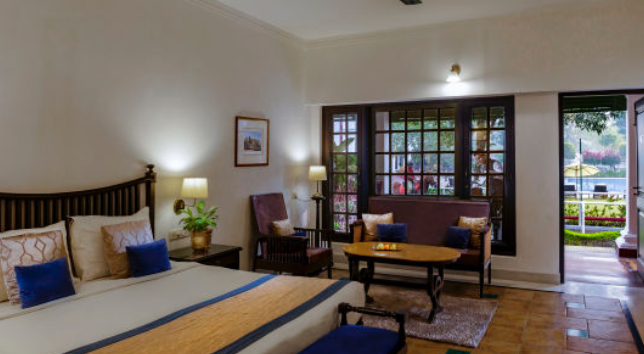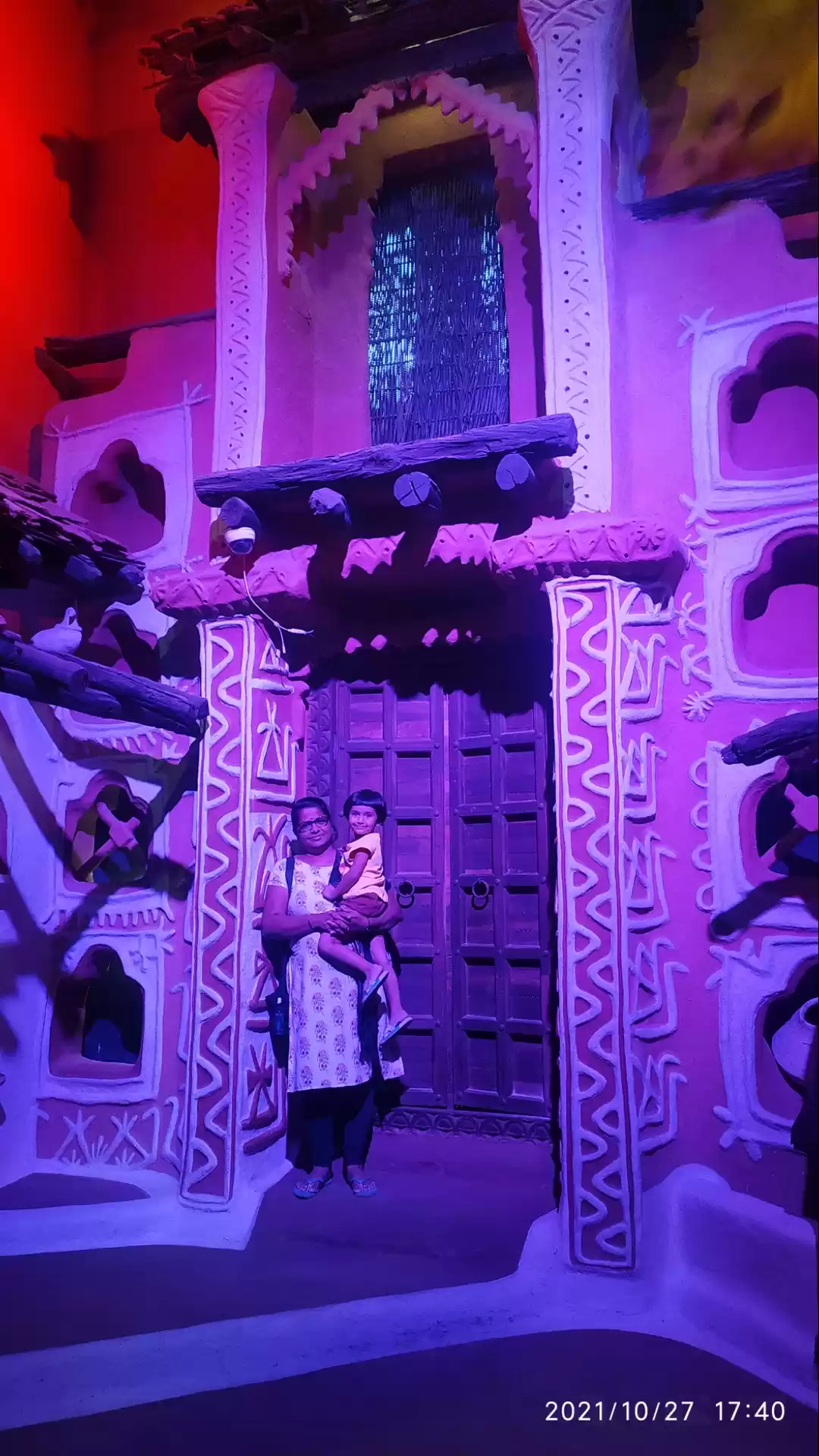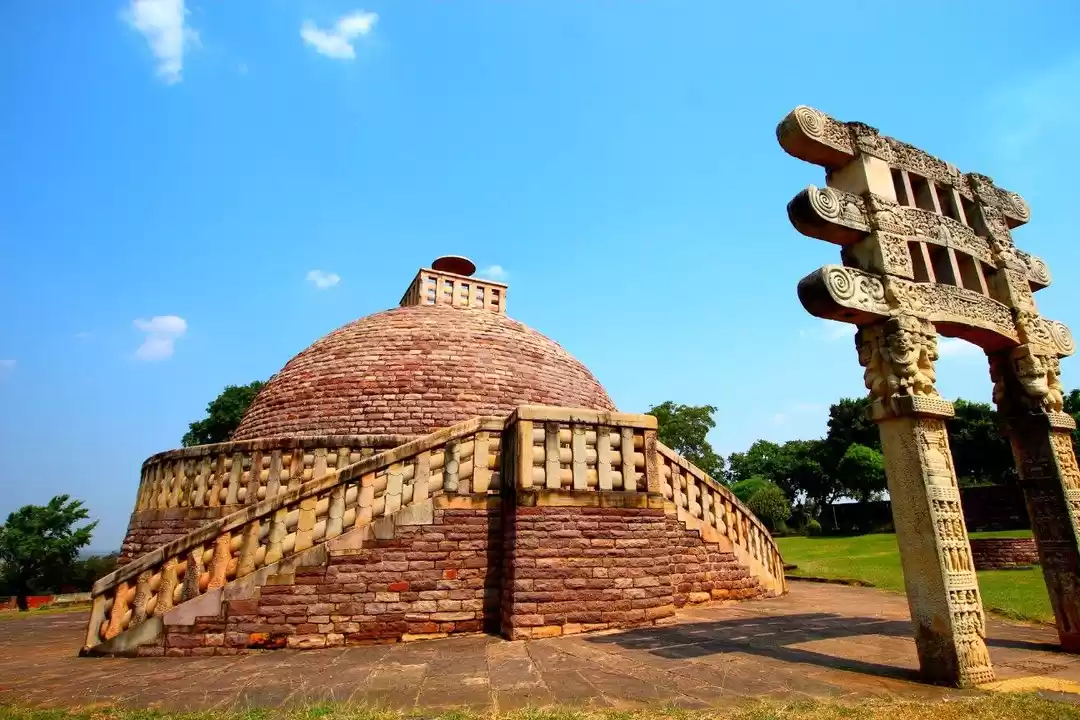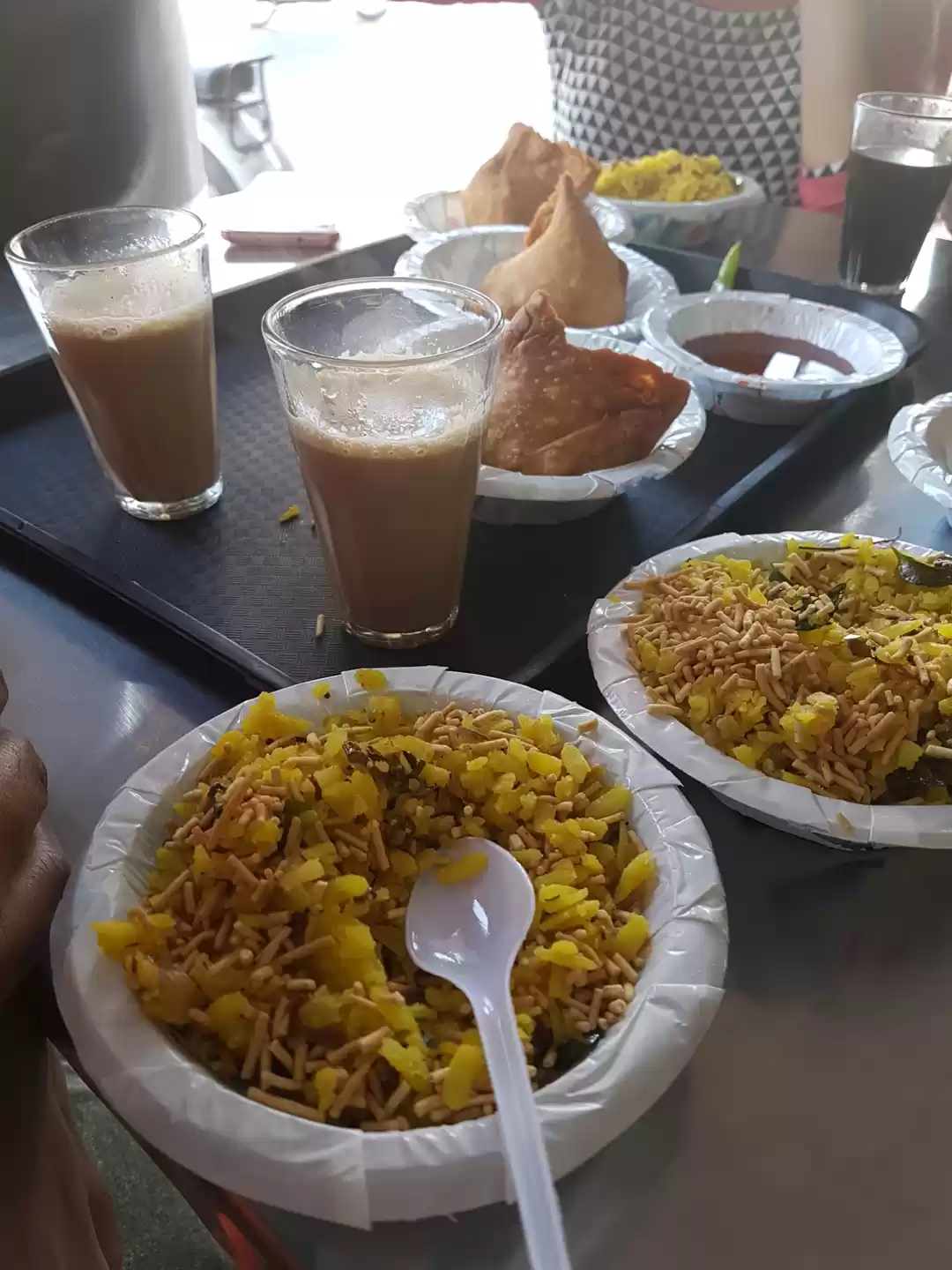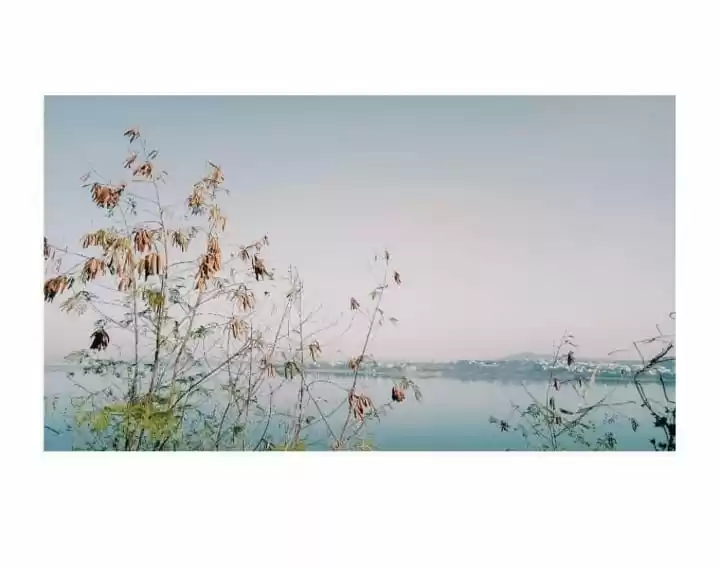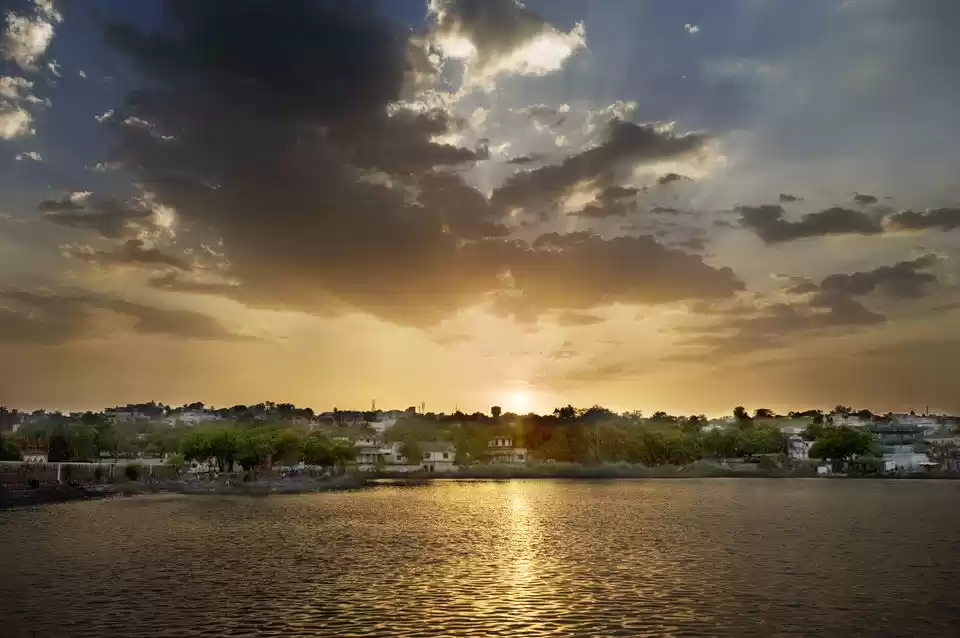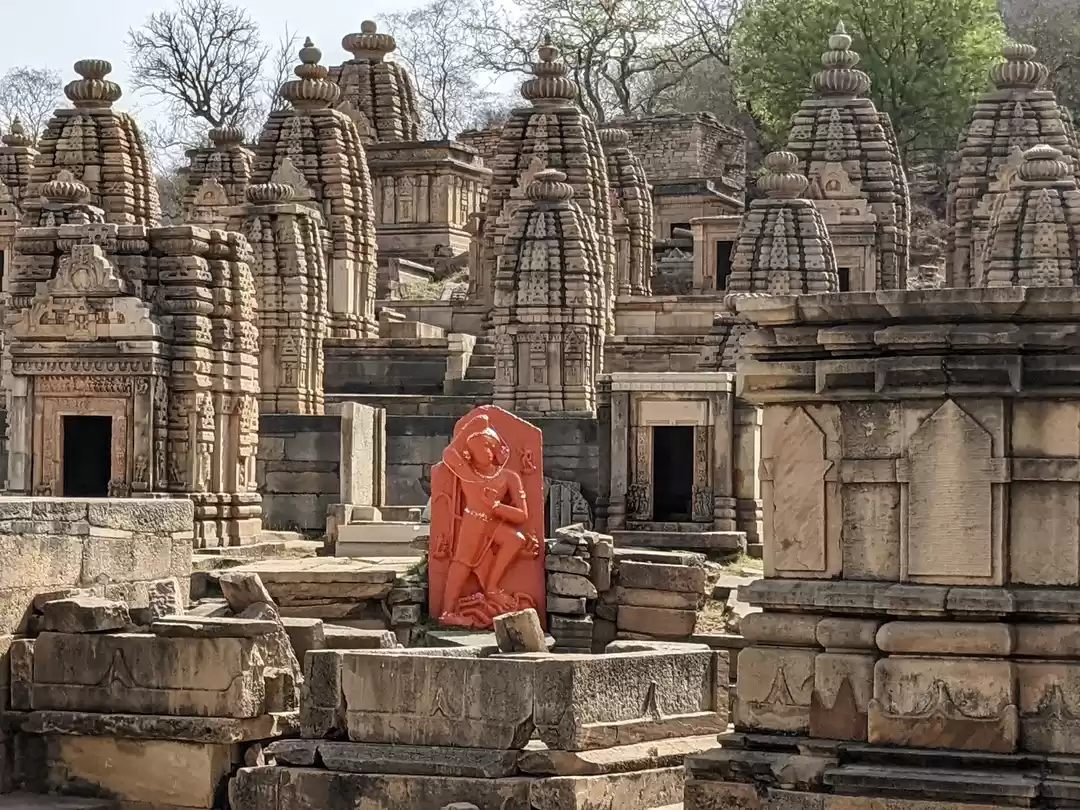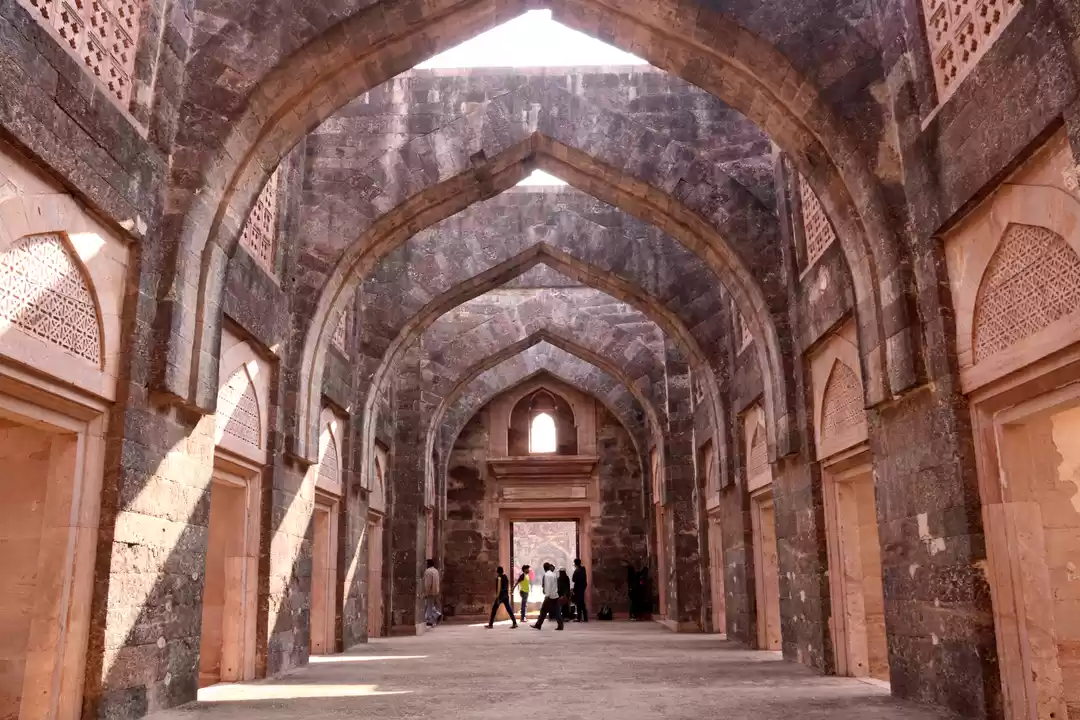
After failing to explain to all and sundry “Why Bhopal, the dry and dusty city still bearing the scars of the Union Carbide tragedy?” and packing overpriced bags of trans fat, sodium and sugar (read, chips, cakes and cookies) we set off aboard Indian Railways Train No. 11057 on a trip to the heart of India. It was a night train and we woke up in the morning to lush countrysides swishing past, in all shades of green. The Tapi and the Narmada, both swelled by the rains, their brown waters gushing by uncontrollably, dangerously close to the banks, spitting foam as wave after wave hit the banks, were awe-inspiring sights and a grim reminder of floods ravaging the country.
By early evening we were at Habibganj, just an hour and half behind schedule, breathing in the coolness of fresh rains, the sticky heat of Bombay a distant memory. The Uber driver informed us that the rains that had paused only since last night, was what had brought about this pleasant weather.
Named after Sultan Jehan Begum, one of the longest reigning rulers of Bhopal (1844 – 1901), the Jehan Numa Palace Hotel was where we were set to stay during our trip. The 19th century palace converted into a hotel, complete with arched walkways winding past immaculately kept gardens, paintings and photographs adorning the walls, jockeys riding thoroughbreds around the courtyards, impeccably dressed fez-hatted bellboys, made it easy to lose ourselves in the old world charm and opulence of a bygone era, and to imagine that instead of being a camera wielding traveler family clutching at our copy of the Lonely Planet India, we were in fact a revered guest of the Sultan, to be wined and dined and feted and feasted, in the city of lakes, Bhopal.


Our room was large and well-furnished and another door to the back of the room opened into an equally large porch which led to a lawn and a rock pool. The lawn was shared among three rooms and so was the back yard with the rock pool.


Upon arrival and after check-in and a quick shower, we decided to step out. Our sole destination for the day was the Lakshmi Narayan Temple on the Arera Hill overlooking the Lower Lake. The bright yellow and red temple with wide gardens all around had marble interiors housing brightly dressed up deities of Lakshmi and Narayana in dazzling pink colour co-ordinated outfits.

From there we walked a short distance to the New Market in TT Nagar area, a maze of streets and narrow alleys bustling with hawkers selling brightly displayed wares from rakhis to nighties to samosas and jalebis and shoppers vying for the best bargains. A samosa chat and mava jalebi later we were back in the hotel.
The next day was the “Around Bhopal” day and the itinerary consisted of Sanchi, Khambaba, Udaygiri, Vidisha, Bhojpur Temple and Bhimbetka, in that order.
Since we had left by 6.30, we were one of the first group of visitors at Sanchi, the other being a group of SriLankan tourists. After leaving word at the gate to send the guide to us whenever he’d come in, we went inside.
The weather was splendid and by the time the guide joined us, we had soaked in the atmosphere and were ready for his stories. He took us on a journey through the ages, from the Mauryan Emperor Ashoka to Kushana King Agnimitra Shunga to the Satavahanas and then the British General Henry Taylor and John Marshall, the first director of ASI (most of which is available readily on the internet for anyone who is interested) that kept us riveted for the next hour or so.
Heliodorus’ Pillar, locally referred to as Khambaba, was the next stop. A beautifully preserved pillar from the 2nd century BCE surrounded by iron railings with a latched gate for entry. The reason for the iron railings was clear soon enough when a calf tried to push its way in as we were coming out of the enclosure. Son, not being habituated to the likes of cows and villages, found it endearing and tried to pet the calf, as he pets our dog back home. The calf annoyed at having been locked out of a buffet of fresh untrodden grass inside the enclosure pushed him and strolled away, much to Son's disillusionment about rude cows.
For more on Heliodorus' pillar, check out this wiki link
Udaygiri caves, that were next on our list, were at a daunting 350 ft height. We did climb all the way to the top, but when we discovered that the caves were a further way off that included climbing down and exploring along a ridge and the way out was back up to the top and then down again, we paused to deliberate the usefulness of the exercise and with a little nudge by the rains, we, not quite unhappily, abandoned our cave adventure and sped down to our car.
Next up was Vidisha, which had a tiny museum tucked inside a dilapidated building behind the railway station. It was a welcome surprise because despite the badly maintained building, there were some rare gems inside, including a giant Kubera statue from 2nd century BCE, an eight handed Vishnu carried by a goddess (or yakshi?) on her back and quite a few Jain Tirthankaras, all surprisingly well preserved. The infrastructure at the museum was non-existent and since we saw no one else around in the hour and a half we spent there, it is doubtful tourists are even aware of it.

The Shiva temple in Bhojpur was next on our list. The unassuming square structure houses a gigantic Shiva linga inside its giant sanctum. The intricately carved ceiling of the sanctum is supported by enormous pillars, conveying strength and beauty at the same time and inspiring awe and fear. The crowd was light and the devotees were mostly locals who had come for picnic and prayers, just as eager to please the god as their fans on social media.
After a short lunch break at a dhaba (complete with khatiyas and truckers) we drove southwards to have a look at the prehistoric Bhimbetka cave paintings. Google maps showed us the way and we drove on till suddenly the road ended and a river flowed across. We re-checked directions and figured that the road was now a river. We met a few locals who had also just encountered this road river transition. They were however less perturbed and more amused. While they explained to us that this was not unusual in these low lying lands, a boat floated into our view, and we were told that this was how life here was and people are well prepared. Having a boat handy, was one of the ways people stayed well prepared.
Since the road to Bhimbetka was nowhere to be seen, they advised a detour through Mandideep. However, halfway down the detour we realized that Bhimbetka caves would be closed by the time we reached there. So we shelved Bhimbetka and decided to return to Bhopal.
A friend had highly recommended People’s Mall, particularly for the replicas of famous monuments. Father was skeptical, but with time to kill he decided to give it a try and what a fun surprise it turned out to be. There were (almost) life sized replicas of the Taj Mahal, complete with the red sandstone darwaza and the reflecting pool, and the Arc de Triomphe and a twin Tour de Eiffel and of course the Taj Mahal Hotel with an OYO board at the top. Having visited the original monuments, we were tickled, but a little surprised too at the life like resemblance. Infinite photographs later, we were back in the car and to the hotel.
Dinner was Bhopali Chicken Rezala and Pankhi Kebab, both chef’s recommendations at the Shahnama Restaurant at the Jehan Numa. Even Son, the picky eater, loved both the dishes. We loved the Shahi Tukda too, melt in your mouth with the right balance of sweetness of sugar and crunch of almonds.

Day 2 was “Bhopal” sightseeing. Woken too early for his comfort, Son tried his best to be a mini monster and play the spoilsport, till he saw the Upper lake, which aroused his curiosity and reduced his animosity towards Mother and Father. However, too proud to admit it, he tried his best to not share in their enthusiasm and excitement (admittedly, a large part of which was for his benefit) till, inside the Van Vihar he spotted a golden jackal. Spotting a spotted hyena and then a leopard, one after the other in quick succession ensured that his good humour was back. A snake park, a few peacocks and peahens and a ghariyal couple also showed themselves and made a success of the urban jungle safari.


The breakfast spread at the Jehan Numa Palace was large and inviting and therefore breakfast was long and leisurely. After breakfast we went to the Old City. After weaving our way through the narrow and crowded lanes of the Peer Gate locality we reached the gold tipped red sandstone Jama Masjid situated right in the middle of the bazaar.

Another short walk later we were at the white domed Moti Masjid accessed by a flight of stairs from the Sultania Road.
Further along the Sultania Road we walked till we reached the Taj-ul-Masajid. It is a striking sight with its colossal pink minarets and three white domes housing a large prayer hall with attractive pillars and is supposedly the third largest mosque in India. Son befriended the kind, elderly gentleman who was one of the caretakers of the mosque and was informed by him that after starting to build the mosque the Begum ran out of funds and could not complete it. The incomplete portions were completed later by devotees. The original construction was in red sandstone and the parts completed later were painted pink.
In the second half of the day we visited a few museums. The Museum of Man or the Rashtriya Manav Sangrahalay is perhaps the largest open air anthropological museum in India with tribal huts of tribes from all over India, from Nagaland in the east to Gujarat in the west and Himachal in the north to Kerala in the south, constructed in typical village settings. The introductory gallery houses brief explanations about each of the exhibits and is useful in deciphering the culture and the way of life of a particular people. There were families picnicking in and around the huts and we imagine it would be a big draw in the pleasanter winter months. There is also a large indoor gallery with a variety of exhibits relating to history of man, including origin of life, the first peoples and their ways of life.

The next stop on the day's itinerary was the MP Tribal Museum. It is a comparatively new museum (opened to the public in 2013) for exhibiting “living aspects of tribal life, indigenous aspects of knowledge systems and aesthetics”. It is beautifully conceived and rendered in a form that makes their culture, beliefs and artforms more accessible and more comprehensible to the uninitiated. The note accompanying each artwork sets the theme and the background of the installation itself as well as details of the artiste and the tribe to which the artiste belongs.

After spending a good many hours, three tired souls went back to the hotel.
Dinner was at the highly recommended Under The Mango Tree restaurant. Mother sent the staff into a tizzy by calling the waiter to ask for his recommendations. It took him by surprise and he felt offended that he had to choose one dish over the others and he kept insisting that all the dishes were superb. He called his manager and the manager finally sent the chef. On the chef’s recommendation we had the Murgh Malai Tikka and the Bhopali Yakhni Pulao. The Murgh Malai Tikka tasted no better or worse than what we had had before and therefore was a disappointment. However the mildly spiced Yakhni Pulao with meat falling off its bones was a different story altogether and is highly recommended.
Bhopal, with its good food, great people and beautiful destinations had treated us well and given us all the answers we needed and we could now go back and say "Why not Bhopal?"


